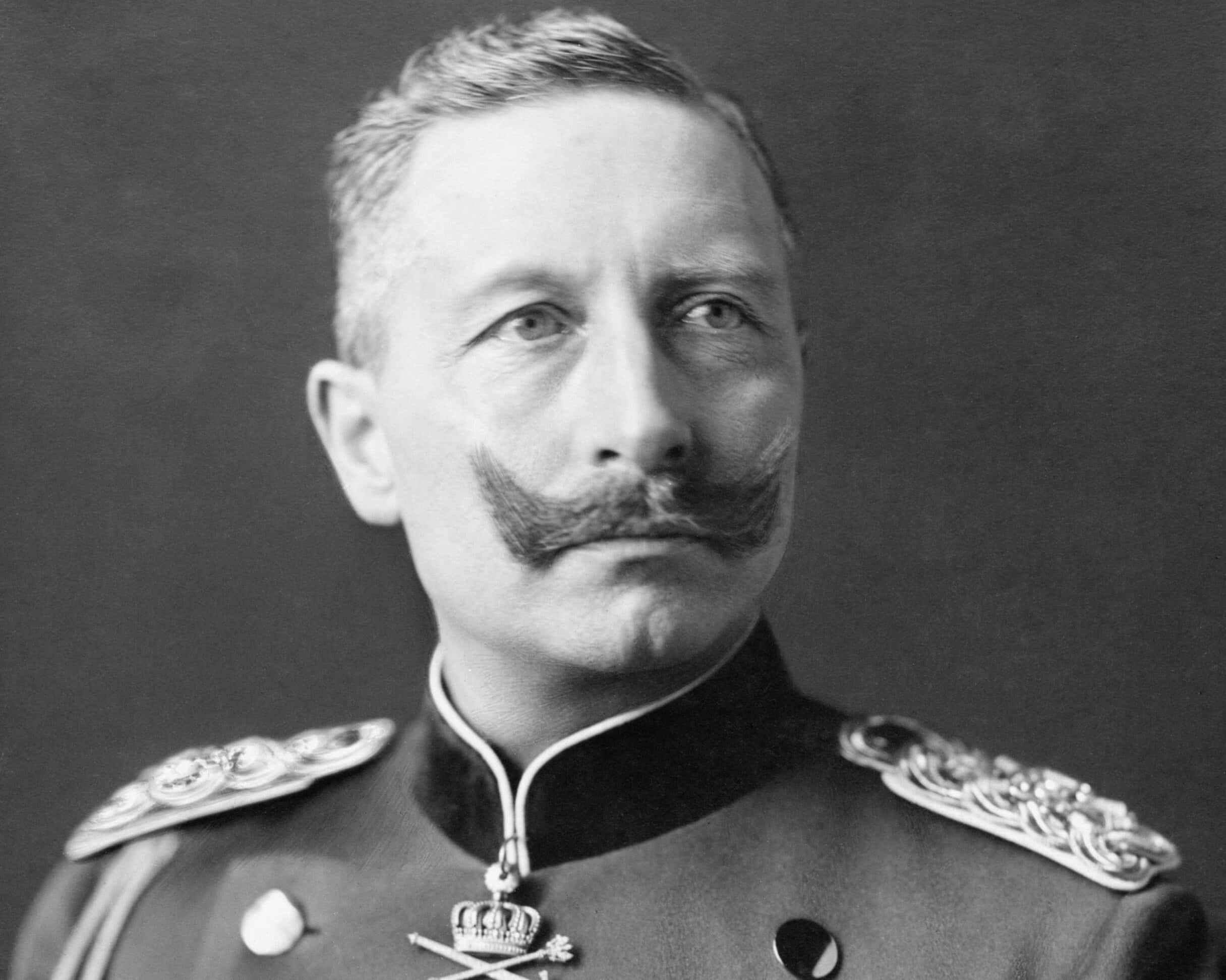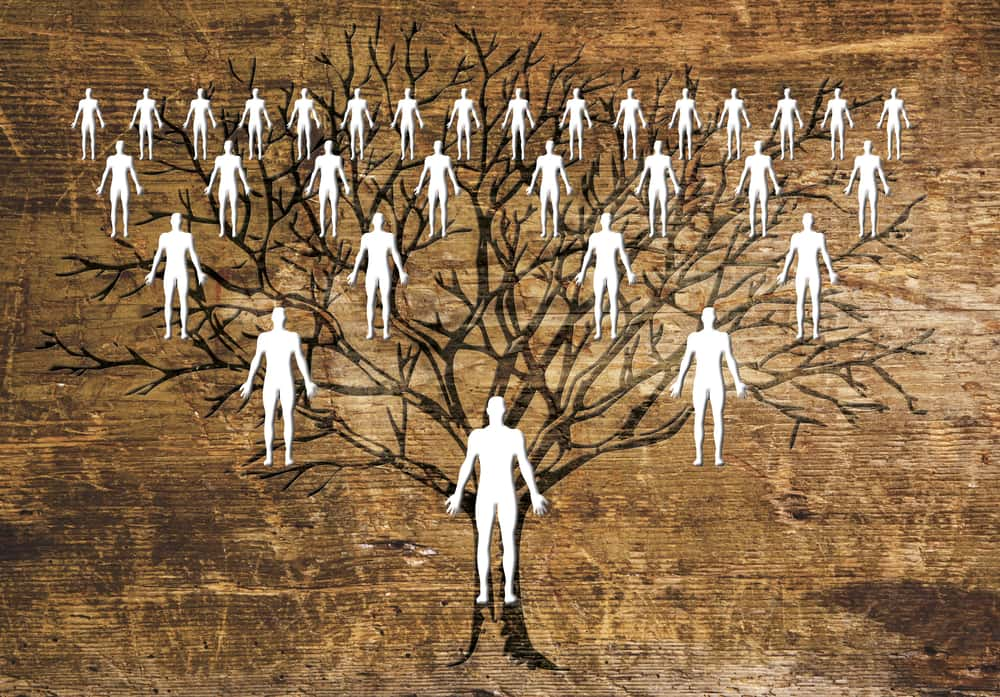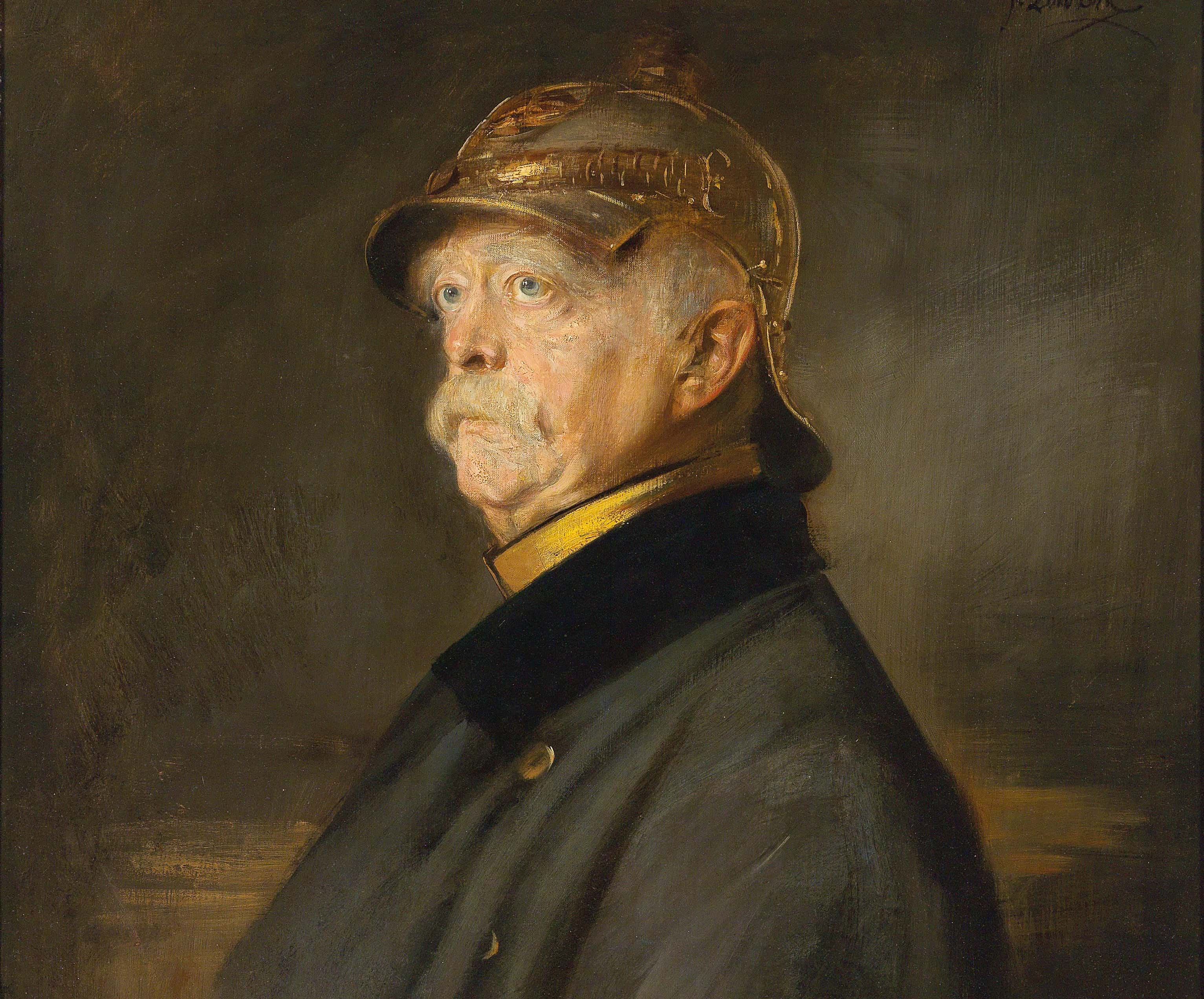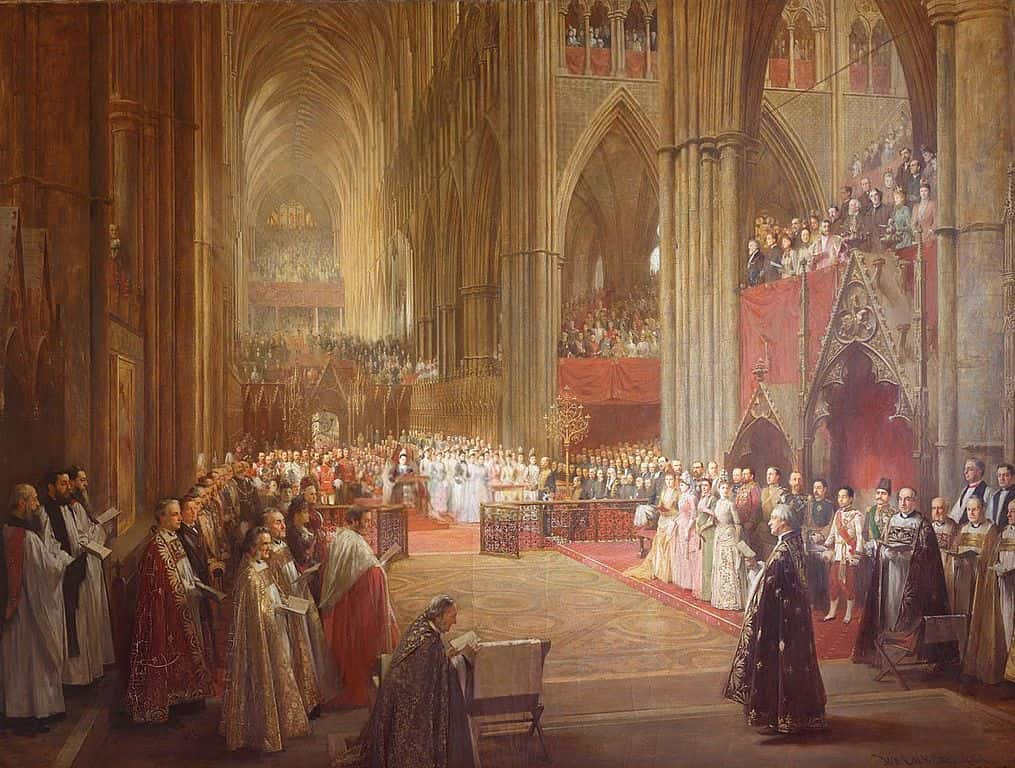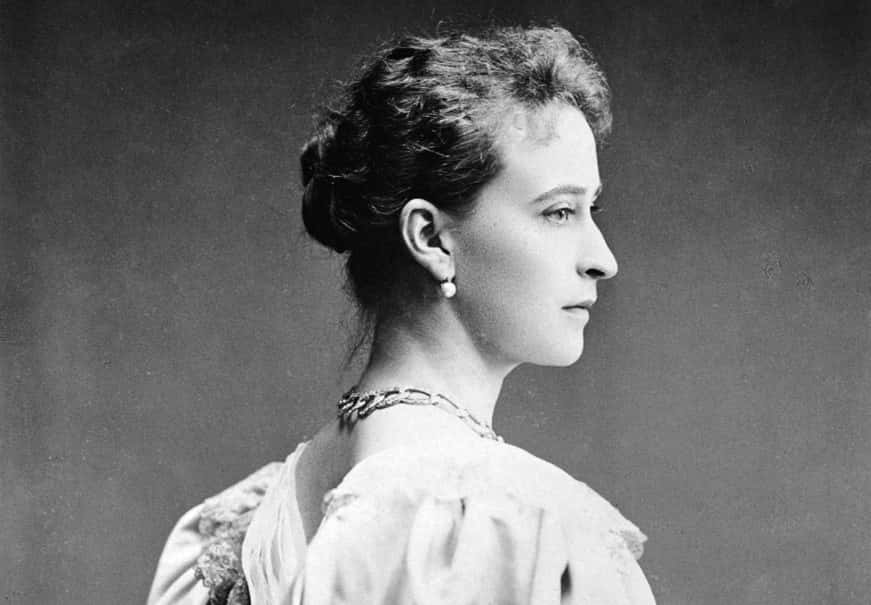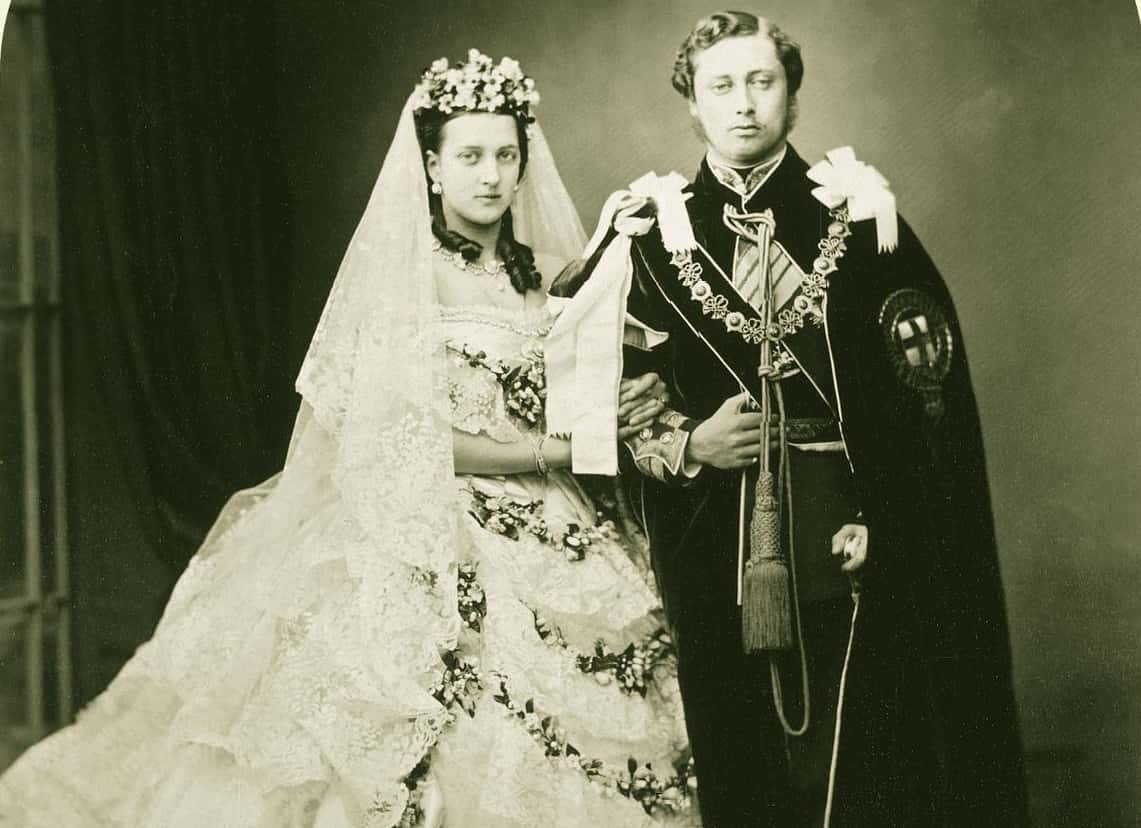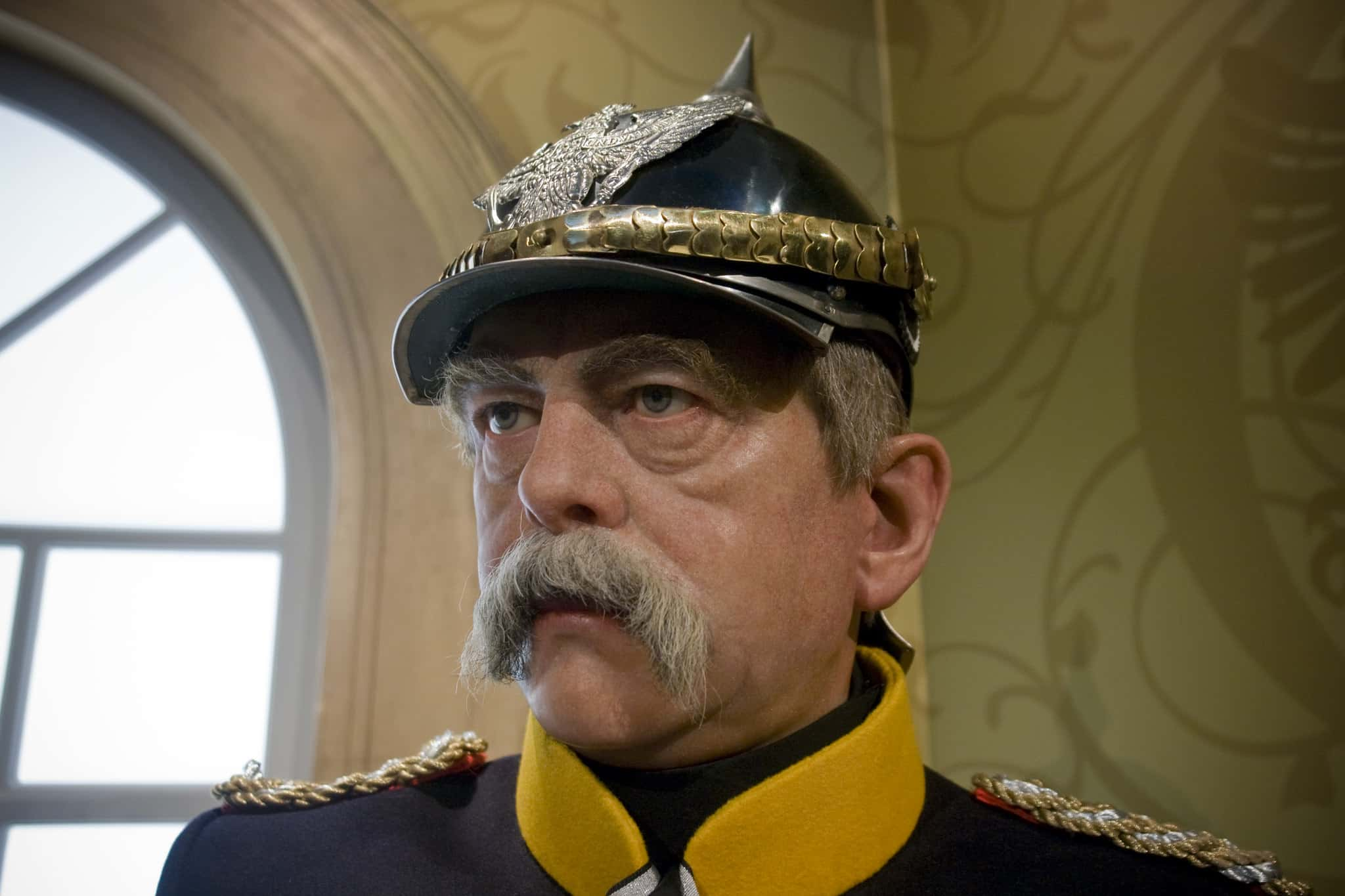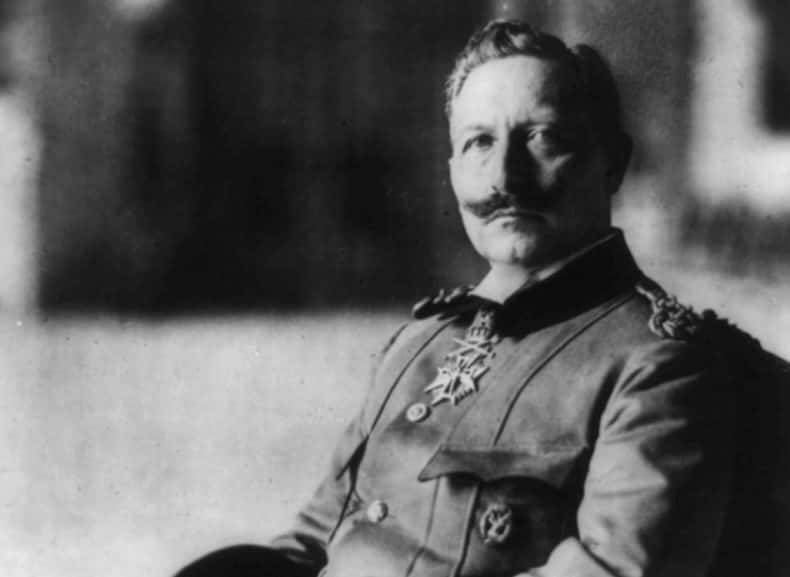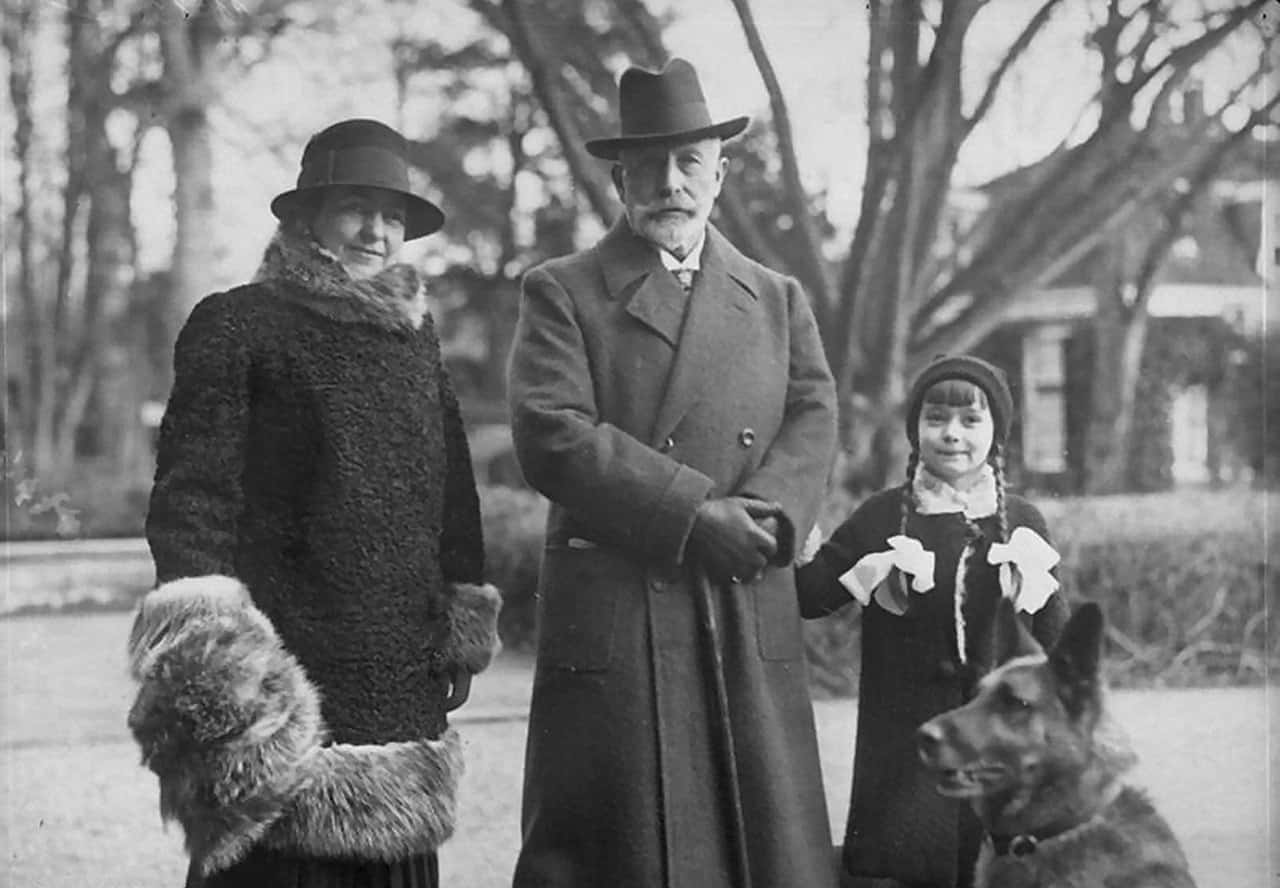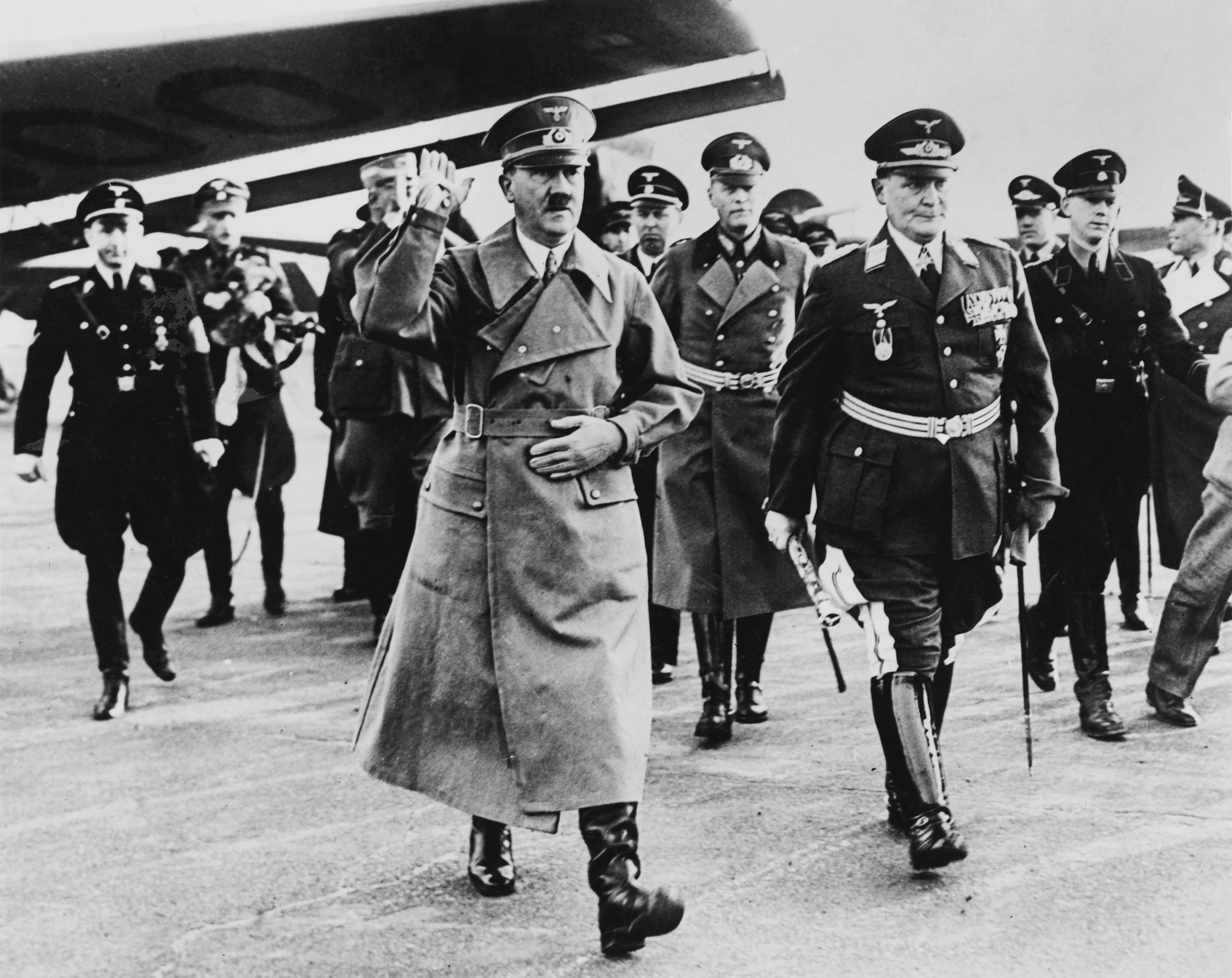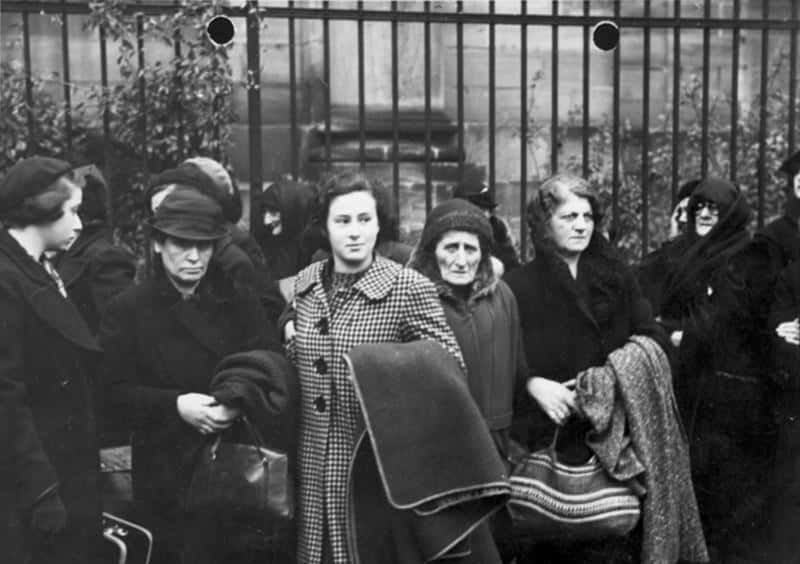It’s tempting to say that the German Kaiser Wilhelm II was the most vilified man in all of WWI. Countless books and studies cover this infamous figure, with mixed opinions on how much of the blame truly belongs to him. Certainly, he was an easy target; famously hot-tempered, ambitious, and militaristic, Wilhelm loved fighting his enemies, and held many grudges during his long exile in the Netherlands after WWI. While we at Factinate wouldn’t claim to know the whole truth about Kaiser Wilhelm II, we present this list of interesting details about his life and legacy!
1. Chip Chip Cheerio
Friedrich Wilhelm Viktor Albert was born in Berlin on January 27, 1859, to Prince Frederick William of Prussia and Victoria, or “Vicky.” Wilhelm's grandmother on his mother's side was Queen Victoria I of the British Empire, making him a cousin of King George V.
2. Good Job, Gramps!
Wilhelm's parents named him after his paternal grandfather, Wilhelm Friedrich Ludwig of Prussia, who was regent of Prussia at the time. Two years after our Wilhelm was born, his grandfather became Kaiser Wilhelm I of all Germany. Quite a promotion for himself and his descendants!
3. Deep-Rooted Tree
Wilhelm was a member of the House of Hohenzollern, an ancient noble lineage. This European family stretches back to the first century AD and included royal titles across central and eastern Europe. This included the Kingship of Prussia, which that family held for more than two centuries beginning in the 18th century.
4. Scary Beginnings
For a man who lived a life of conflict, it's only fitting that Wilhem's first moments were utterly harrowing. He emerged bottom first rather than headfirst (doctors call this a “breech birth”). Due to the complications of such a birth, Wilhelm spent the rest of his life suffering from Erb’s palsy. One side effect of this condition was that his left arm was very frail, and six inches shorter than his right arm.
5. Nobody Say A Thing!
As you can imagine, Wilhelm's birth defect made him extremely self-conscious, so he tried to hide it whenever in public. He’d sometimes carry his long gloves in his left hand, or he would rest his left hand on the hilt of a sword, or even hold his left hand in his right one, all to maintain the illusion that they were the same length.
6. He Also Hated Tea And Crumpets
Wilhelm was famously anti-English throughout much of his life, and his English mother was no exception in that resentment. Wilhelm even blamed his mother for his birth defects, as she had only allowed English doctors to assist in the birth. To be fair to Vicky, we’re not sure what German physicians would have done any differently from the English ones, but try convincing Wilhelm of that!
7. Let’s Get Down To Business!
Due to Wilhelm’s close ties to the German region of Prussia, tutors exposed him to Prussian culture from a very early age. Famously militaristic, Prussian culture pushed men to exude a hyper-masculine attitude and demeanor. This upbringing and value system shaped Wilhelm for the rest of his life. He was obsessed with uniforms (more on that later), and his traditionally masculine personality shaped all of his personal relationships.
8. The German Vizier
One of the more important figures in Wilhelm’s life (and in German history) was Otto von Bismarck. Just so you know who we’re talking about when we get back to him, Bismarck was a long-lived and very powerful German statesman who helped orchestrate the unification of Germany as we know it today. Although he never wore a crown, Bismarck managed to intimidate and influence more than one Kaiser.
9. Well, It’s Not Notre Dame, But…
In 1891, Wilhelm embarked on a campaign to promote a return to tradition and the Protestant religion. This included the construction of a new church in Berlin, named in the Kaiser's honor. The Kaiser Wilhelm Memorial Church survived its namesake’s reign, though it was badly damaged during a WWII bombing raid. The remains of the church now exist as a landmark in Berlin.
10. The Lost Picture
Wilhelm was portrayed on film before WWI was even over! In 1918, actor/filmmaker Rupert Julian played the role of Wilhelm in the Hollywood propaganda film The Kaiser, the Beast of Berlin (which Julian also wrote and directed). As you can imagine, Wilhelm is villainized in the piece, with the film blaming his greed for starting WWI. Although the film was a huge success upon release, no copies of it have survived.
11. What A Great Guy! Right?
As you can imagine, Wilhelm earned many honors within Germany as befitting his royal title. Many knightly and religious orders, especially in the region of Prussia, bestowed honors and ranks upon Wilhelm. This wasn’t just a local trend, however. Throughout his life, Wilhelm was granted honorary titles from such places as the Ottoman Empire, Belgium, Spain, Russia, Italy, Japan, even Hawaii!
12. Home Away from Home
Wilhelm was almost 21 years old when his grandfather, Kaiser Wilhelm I, assigned the young man with his first posting in the armed forces. Wilhelm became a lieutenant in the First Regiment of Foot Guards. His experience was such a positive one that he later wrote that the troop was where "I really found my family, my friends, my interests—everything of which I had up to that time had to do without."
13. Short Reigns
While it sounds ominous to call yourself the last German emperor, or kaiser, Wilhelm’s dynasty wasn’t quite as impressive as you’d think. The title of “Kaiser” had only been in effect beginning in 1871. Wilhelm was only the third man to rule as Kaiser after his father died prematurely of cancer. And by prematurely, we mean that Frederick III ruled for less than 100 days!
14. High Achiever
Wilhelm was educated at the Friedrichsgymnasium in the German city of Kassel. The institution focused on teaching subjects pertaining to humanism and independent thought. When Wilhelm graduated in 1877, his grandmother, Queen Victoria, gifted Wilhelm with the Order of the Garter.
15. New Meaning To The Term “Homewrecker”
When Wilhelm was a young man, Otto von Bismarck began using him as a political weapon for his own ends. Seeing Wilhelm’s more liberal parents as opponents, von Bismarck drove wedges between them and Wilhelm, so that their relationship with their son was permanently fractured. It wasn’t the last time that von Bismarck attempted to manipulate Wilhelm (more on that later).
16. Backhanded Compliment
When he was a child, Wilhelm was tutored by Georg Hinzpeter, whom he also considered to be a mentor. However, Wilhelm’s praise for Hinzpeter was double-edged. While he later called Hinzpeter “a good fellow,” he couldn’t help adding, “Whether he was the right tutor for me, I dare not decide.” Ouch.
17. Spoiled Man-Child
Wilhelm was reputed to have a very volatile personality. Despite his noted intelligence, Wilhelm was apparently very insecure, seeking approval and vindication at every turn. He was also prone to emotional outbursts or breakdowns. Otto von Bismarck once scathingly suggested that Wilhelm wanted every day to be his birthday. He also attempted to hide his anxieties with “swagger and tough talk.”
18. It Was A Very Good Year
1888 was one of the most important years in Wilhelm’s life. That was the year that saw the demise of his grandfather, Kaiser Wilhelm I, and the succession of his father, Frederick III. However, Frederick III ruled for fewer than a hundred days before he succumbed to cancer. Thus, Wilhelm began his own reign as German Kaiser. As a result, 1888 became known as the Year of the Three Kaisers.
19. It’s About Time!
As any American will tell you, Time is a long-running and long-respected magazine, and if you make their cover, it speaks volumes about your impact on the world, however positive or negative. On June 28, 1926, Wilhelm made the cover of Time, though some people might have argued that he ought to have been on the cover a few years earlier than that!
20. Little Did They Know…
In the mid-1880s, von Bismarck started sending Wilhelm on diplomatic missions. One of the places he visited during this time was Russia. In 1884, Wilhelm attended the coming-of-age ceremony for the future Tsar Nicholas II. However, Wilhelm didn’t get along with the Russian royal family. No surprise, then, that years later, Wilhelm and Nicholas II became the bitterest of enemies in WWI!
21. Probably For The Best
Despite these diplomatic missions being assigned to the young Wilhelm, one honor was denied to him. He wasn’t allowed to represent his country at the 1887 Golden Jubilee of Queen Victoria, his own grandmother. Then again, given Wilhelm’s hatred for the British by then, maybe it was a good call!
22. I’ll Show You!
While he was a young man, Wilhelm fell head over heels for Princess Elisabeth of Hesse-Darmstadt, one of his first cousins. However, when he proposed to her, she turned him down. Wilhelm reportedly took the rejection very badly, and publicly swore to he marry a princess immediately. We can only assume that he also wrote some angry poetry about his feelings in his journal.
23. …And That’s That!
The princess with whom Wilhelm rebounded was Augusta Victoria of Schleswig-Holstein. However, Wilhelm’s family objected at first, because Augusta’s father wasn’t a royal in his own right. However, Wilhelm was stubborn once he’d made up his mind, and his family grudgingly approved of the match. They married on February 27, 1881.
The couple would go on to have seven children: Wilhelm Jr., Eitel, Adalbert, August, Oskar, Joachim, and Victoria, their only daughter.
24. Och, No!
When Wilhelm was four years old, he accompanied his father to England. Both attended the wedding of Wilhelm’s cousin, the man who later became King Edward VII. Due to the wedding’s theme, Wilhelm and his father dressed in Highlander costumes. We can only hope that they didn’t try to imitate Scottish accents during the reception!
25. Little Scrapper
Speaking of that Highlander costume, it also came with a toy dagger for the young Wilhelm. Unfortunately, that proved to be a mistake. During the wedding ceremony, Wilhelm became restive, as four-year-olds are wont to do. When one of his cousins attempted to silence him, Wilhelm fought back with the dirk, and even bit his cousin’s leg!
26. Follower Of Fashion?
Did we mention that Wilhelm loved uniforms? The Kaiser allegedly owned more than 400 different uniforms, which he categorized by what he’d wear to which kind of event. In case that wasn’t obsessive enough, Wilhelm made sure to match his uniform to the men he was meeting with, ie. if he was going to sit with an artilleryman or an infantryman, he’d be wearing the same uniforms as they were!
27. Praise Allah?
Interestingly, despite his vigorous attempts to enforce a traditionalist view of religion in German society, the Islamic faith deeply interested Wilhelm. Unlike any other monarchs in Europe, Wilhelm visited the city of Constantinople (later Istanbul) three times during his reign. Wilhelm not only considered himself a friend of “300 million Mohammedans,” but he even declared in a letter, "If I had come [to Constantinople] without any religion at all, I certainly would have turned Mohammedan!”
28. As Played By…
The most recent example of Wilhelm being portrayed in film was the historical romance film The Exception. It depicts Wilhelm as an old man in exile, convinced that a spy is in his household plotting to kill him. In a bit of irony, Wilhelm isn’t played by a German actor, but by Canadian thespian Christopher Plummer. Despite glowing reviews, the film was not a financial success.
29. Bye-Bye, Otto!
During his early reign as Kaiser, Wilhelm increasingly butted heads with Otto von Bismarck, his Chancellor. Wilhelm disliked the old man and clashed with him over domestic and foreign policies. By 1890, the 75-year-old Bismarck was so fed up with his new Kaiser that when Wilhelm insisted that he resign, he didn’t fight him on the matter.
30. You’ll Be Sorry!
Despite Wilhelm’s triumph in getting Otto von Bismarck out of power, there were serious consequences in the long term. One thing which Bismarck had always strived for was peace between Germany, France, and Russia. Upon his dismissal, the Russian government predicted that Germany would be more hostile and militant under the Kaiser’s new man.
As a result, the Russians reached out to France and Britain. This led to their three-way alliance during WWI, the Triple Entente, leaving Germany out in the cold.
31. Hunbelievable!
During WWI, the English-speaking world famously called the Germans “Huns." Interestingly, the origin of that nickname rests with Kaiser Wilhelm himself! The nickname was first coined in 1910, when Wilhelm was sending German forces to participate in the Boxer Rebellion in China. That same year, Wilhelm gave a speech where he compared the German men to the terrifying ancient army known as the Huns. Everyone subsequently took that comparison and ran with it.
32. Can’t I Keep One Crown? Please?!
During the final stages of WWI, Wilhelm saw the writing on the wall and knew that he’d have to give up his title of German Kaiser. Despite that, he remained hopeful that he could continue to be the King of Prussia, the original royal title of his ancestors. Even though the imperial constitution of Germany made it clear he couldn't have his cake and eat it too, Wilhelm continued his stubborn streak.
He only abdicated both titles when his advisors directly told him the army would no longer fight for him. Wilhelm fled to the Netherlands after his abdication and lived in Doorn for the rest of his life.
33. Someone Tell PETA
If there’s one thing Wilhelm really loved doing, it was hunting. After he lost his crown and live in exile, he turned to this hobby with renewed enthusiasm. It’s impossible to calculate how many animals and birds Wilhelm bagged, but the estimates are in the thousands.
34. Lumberjack In A Past Life?
Another one of the last great passions in Wilhelm’s life was, oddly enough, woodcutting. In the time he lived in Doorn, Wilhelm oversaw the chopping of several thousand trees. We can only imagine how many Ents he angered while doing that!
35. Ship Measuring Contest
If the Kaiser had any passion projects, it was undoubtedly the German navy. Though the British were almost always his bitterest enemies, he couldn't help but admire their great Navy. Taking inspiration, Wilhelm rapidly built up his own fleet to challenge Britain's naval supremacy. Of course, the British responded to that challenge in kind, and it influenced their own desire to oppose Germany in WWI.
36. Talk About A Tiger Mom!
The only person more self-conscious about Wilhelm’s withered left arm than Wilhelm himself was his own mother, Vicky. Blaming herself for her son’s birth defect, Vicky was obsessed with the goal of her son overcoming this disability. Her main issue was horseback riding, as it was unthinkable that the heir to the German Empire couldn’t ride a horse.
As a child, Vicky pushed Wilhelm into equestrian lessons until he could ride a horse one-handed, even while exhausted and weeping. Wilhelm never forgave his mother for this torturous regimen.
37. Wait, What?!
In the late 1800s, long before WWI, the ambitious and paranoid Wilhelm authorized one of his staff to begin planning an attack on the US. The plans made it as far as members of the German Embassy in the US scouting the east coast for suitable landing spots! Thankfully, the Kaiser changed his mind about the feasibility of the plan, so he called it off in 1907.
Ironically, the US and Germany found themselves in open conflict just ten years later!
38. Dark Society
In 1911, supporters founded the Kaiser Wilhelm Society, named after the ruling German monarch. This was a state-funded institution whose focus was on promoting science within Germany. Sadly, despite becoming a highly prestigious institution recognized on an international level, the Kaiser Wilhelm Society soiled its reputation by becoming heavily involved in the production of nightmarish equipment for use during WWI, including toxic gas on the battlefields of Europe.
Additionally, the institution assisted the German government with horrific scientific studies during the Holocaust. The crimes of the Kaiser Wilhelm Society were so ghastly that its president shot himself when the Allies invaded Germany!
39. Kaiser In Name Only?
For all that people blamed Wilhelm for WWI during and after the fighting, he spent the conflict steadily losing power over his own armies. Although he continued to be the symbolic figurehead of Germany, overseeing awards and honorific events, historians have pointed out that from 1916 onward, General Erich Ludendorff and Field Marshal Paul von Hindenburg held the real power in Germany.
40. What Might Have Been
During Wilhelm's lifetime, the law stated that the first male born to the British monarch would become the heir, rather than the firstborn child. This meant that Wilhelm’s mother, Vicky, couldn't inherit the British throne. However, if the law that is currently in place (which disregards a child’s gender in the line of succession), then Wilhelm would have become the King of England following his mother’s passing.
Feel free to try and imagine how WWI would have played out if Wilhelm had been the monarch of both Germany and the UK!
41. German Gaffe
In 1905, Wilhelm made a grand visit to the country of Morocco, escorted by representatives of Sultan Abdelaziz. While there, the Kaiser announced that he meant to “support the sovereignty of the Sultan.” This infuriated the French because it sounded like Germany meant to interfere in Moroccan politics and oppose the French interests.
Emboldened by the Kaiser’s comment, the Sultan tried to break from the French, turning down a series of governmental reforms that would benefit them. The First Moroccan Crisis, as we call it today, may not have led to actual fighting, it did push France and Britain into a closer alliance against Germany just in time for WWI.
 [/media-credit] Sultan Abdelaziz of MoroccoWikimedia Commons Sultan Abdelaziz of Morocco
[/media-credit] Sultan Abdelaziz of MoroccoWikimedia Commons Sultan Abdelaziz of Morocco
42. Hang Him High!
The level of hatred felt towards the Kaiser is almost impossible to exaggerate. After Germany agreed to an armistice, there was a lot of public pressure, in France and England especially, to make Germany pay. Across Europe, common people hanged or burned effigies of Wilhelm in celebration of his defeat. Despite all that, however, nobody really tried to have Wilhelm extradited from the Netherlands, where he’d fled.
43. Exclusive Exposé, Part I
Anyone who’s studied WWI will know that many, many factors led to open conflict. If the assassination of Archduke Franz Ferdinand was the spark that triggered fighting, years of tension between the most powerful nations of the world provided fuel to the fire. By 1908, even Wilhelm could feel the atmosphere heating up in Europe, so he gave an interview to the British Daily Telegraph in an attempt to strengthen ties between the German and British empires.
44. Exclusive Exposé, Part II
Despite any good intentions, Wilhelm’s interview with the Daily Telegraph went south really fast. The emotionally volatile Kaiser managed to say every wrong thing imaginable. First, he insulted the British by accusing them of being jealous that the German Empire was beginning to outpace them. He then claimed that he only supported Boers against the British at the request of Russia and France.
Finally, he claimed that he built his massive German fleet to target the Japanese, not the British (though the two nations were allies at the time). The outrage across the world was such that Wilhelm fired his foreign minister and kept a low profile for a good long while.
45. Witch Hunt Activate!
One of Wilhelm’s closest friends was Prince Philipp zu Eulenberg, who also served as Wilhelm's statesman and advisor. However, this came to an end due to a series of scandals that rocked German society from 1906 until 1909. In that time period, authorities accused several German courtiers of homosexual behavior, leading to disgraces and suicides.
Among the accused was Eulenberg himself, forcing him out of the Kaiser’s inner circle. The Harden-Eulenberg affair was the most controversial case of its kind since Oscar Wilde’s trials in the UK.
46. A Secret Forever Hidden In The Closet
Speaking of the homosexual scandals of Wilhelm’s court, the Harden-Eulenberg affair has led many historians to suggest the theory that Wilhelm was a deeply repressed gay man. There were gay men among his closest advisors, as the trials revealed, and Eulenberg’s own romantic feelings for Wilhelm also came to light. No one knows if Wilhelm ever reciprocated Eulenberg’s feelings, nor what his real orientation was.
47. The Best Laid Plans...
It remains debated to this day how responsible Wilhelm was for WWI’s rapid escalation. Though undeniably warlike in his disposition, even Wilhelm could see the risk of a two-front conflict with the Russians and the French. His hopes that Britain would stay neutral also fell apart when they stood with France. As a result, Wilhelm intervened in his generals’ plans with a new strategy of his own...
48. Internal Struggle
In order to avoid a two-front fight, Wilhelm suggested that they did not engage the French in combat, focusing all their energy on Russia. One person who objected hotly to this was General Moltke, who had spent years perfecting the invasion of France with such precision that “11,000 trains were punctually timed to pass over a specific track at 10-minute intervals.”
Moltke’s arguments for the invasion of France eventually made Wilhelm change his mind, and the rest is history. It remains debatable to this day what might have happened if the Kaiser hadn’t attacked the French, and how WWI would have played out.
49. Take The Hint, Dude
During the rise of Fascism in Germany, as well as the early stages of WWII, Wilhelm was hopeful that it would result in a restoration of the monarchy in Germany, with his grandson becoming the fourth Kaiser. However, Adolf Hitler openly hated Wilhelm. A veteran of WWI, he felt that the disgraced Kaiser was “an idiot.” Despite the new leader's refusal to humor him, Wilhelm remained proud of German advances in the conflict. Even when the Germans threatened to invade the Netherlands, Wilhelm refused an offer for asylum in Britain.
50. The Kaiser Is No More
By 1941, German forces occupied Wilhelm’s adopted country of the Netherlands. Wilhelm was 82 years old at the time. He died of pulmonary embolus on June 4, 1941. Although Hitler had openly hated the Kaiser in life, he still wanted to bring Wilhelm back to Germany for a state funeral. His reasoning was that it would provide proper closure, showing how Germany had completely evolved into the Third Reich.
Wilhelm, however, made it clear that he only wanted to return to Germany, alive or dead, if they had restored the monarchy. As such, his burial took place at Doorn in a mausoleum. Out of spite, Hitler ensured had Wilhelm’s funeral decorated with swastikas (despite Wilhelm’s wishes to the contrary).
51. A Single Moment Of Self-Awareness
Wilhelm was famously anti-Semitic during his lifetime, blaming the Jews (as well as the Freemasons) for triggering both WWI and WWII. However, when Germany enacted the horrific 1938 attack on Jewish communities known as Kristallnacht, even Wilhelm balked. Appalled at the barbarism displayed in the attacks, Wilhelm claimed “For the first time, I am ashamed to be a German.”
Sadly, even this sentiment didn’t stop him from later cheering on the German invasions of Poland and the Netherlands.
Sources: 1, 2, 3, 4, 5, 6, 7, 8, 9, 10, 11, 12, 13, 14, 15, 16, 17, 18, 19, 20

